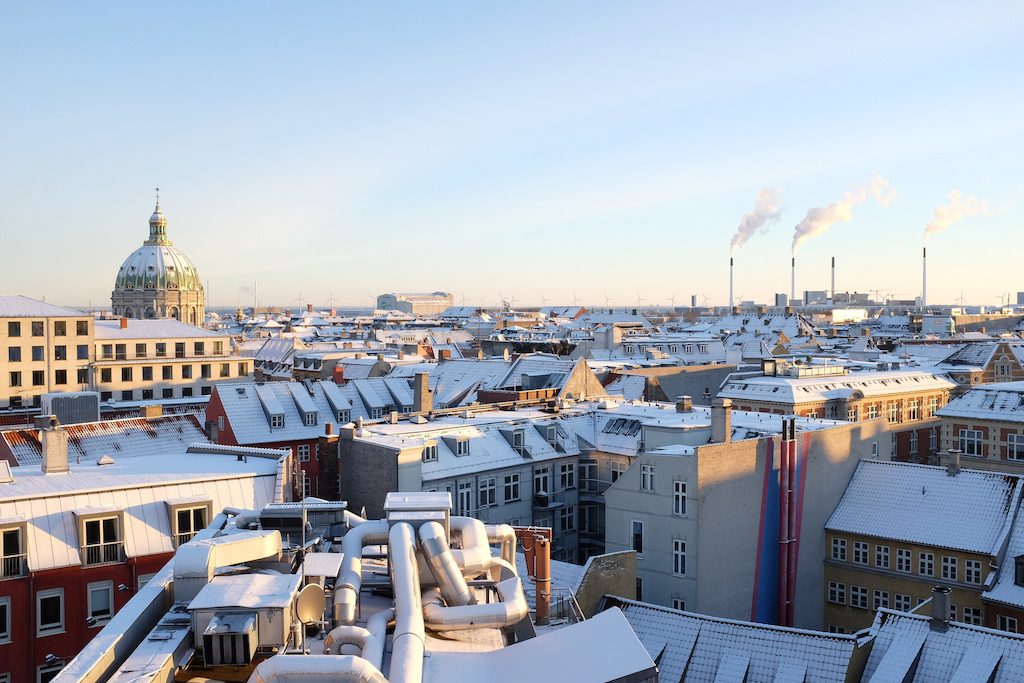For Denmark to reach climate targets, geothermal heating needs to be considered
In an opinion piece in Danish publication Borsen, the CEOs of E.ON, GEOOP and Iceland Drilling Company make the case for Denmark to use its geothermal energy resources for its heating sector, describing it as necessary for the country to reach climate targets.
In an opinion piece in Danish publication, Borsen.dk, “It is the last investment cycle – If we are to reach the climate targets, we need to exploit heat resources, just below our feet, including geothermal.” Af tore Harritshoj, Managing Director, E.ON, Lars Anders, Manging Director, GEOOP, and Sigurdur Sigurdsson, CEO of Iceland Drilling Company make a case for geohermal heating.
It is not impossible to reach climate targets, but it requires an urgent and unprecedented effort. Summing up the UN Secretary-General, António Guterres, the main point in the UN’s Climate Change Panel’s latest report. In the race between how rapidly climate change unfolds and how quickly green technologies develop, it is crucial that the framework conditions support the development of sustainable green technologies rather than short-term solutions.
Specifically, it means that all investments, which have a life span of more than 25-30 years, should, from today, support CO2-neutral solutions if we are to reach the goal of a CO2-neutral Denmark long before 2050. In this change, the district heating sector plays a special role.
Every day, the district heating sector supplies about 1.7 million. houses with heat, of which approx. half comes from biomass, and the other half comes from natural gas and coal.
It is an important task
The big task, however, is not only to phase out fossil fuels. There is also an important task in ensuring that the biomass we burn recovers quickly. As the climate council points out, in some cases biomass can actually derive more CO2 than coal.
The reason is that biomass is first CO2 neutral when new biomass is replanted, and that may take a long time. Therefore, it is a bottom line that we ensure that the biomass is sustainable – even during the re-planting period.
If you cut down a coniferous tree in northern Russia, it takes a few decades before a corresponding tree grows again, and it is this delay period that becomes relevant if the heat sector is to contribute to the climate target by 2050.
According to the climate council, depending on temperature, biomass has a CO2 repayment period of between 35-50 years.
The government has proposed a reduction of the cogeneration requirement and a phasing-out of coal by 2030. These are good objectives, but it does not matter what replaces the coal. If we want to support the energy system we want by 2050, we must already be significantly better at utilizing surplus heat, solar energy, heat pumps and geothermal heat.
Today, the tax system puts heat pumps and geothermal in a considerably less competitive situation. Therefore, it requires some special visionary and long-term decision makers to invest in these technologies. This despite the fact that geothermal reserves in Denmark are quite significant.
Geothermal energy will typically cover about 15% of heating in a district heating system, which can be increased to approx. 30% in conjunction with heat pumps. At the same time, geothermal seasonal storage surplus heat can help balance the energy system and ensure stable heat supply for countless decades.
Let geothermal replace coal
Earlier this year, the International Renewable Energy Agency (IRENA), described geothermal heat as one of the most cost-effective ways to reduce CO2 emissions.
The potential depends, of course, on the specific geological conditions, but the total Danish heat potential corresponds to more than three times the amount of heat Denmark can expect to produce from oil in the North Sea.
If we want a reasonable chance of reaching our climate goals, we need to start using the heat that is under our feet.
However, the geothermal potential and synergy effects of heat pumps are not new. The UK Government’s Climate Commission recommended that we become better at utilizing this potential, based on the fact that “A large part of the district heat is to be produced on large heat pump and geothermal plants,” so the recommendation sounded ten years ago.
Should we avoid moving from a dependency on foreign coal to an addiction to foreign biomass, we must ensure the framework conditions, which creates a level playing field for geothermal heat with biomass.
Perhaps even a goal of replacing coal with geothermal energy, where the resources allow it.
Conversion with care
As the sustainability criteria for biomass become tighter and global demand increases, a major conversion to biomass does not seem completely risk free.
Geothermal energy, on the other hand, can ensure a high degree of price stability once you have drilled down to a geothermal reservoir.
Several companies today are ready to assist the conversion, but there is a need for free and even competition between the different energy technologies.
Ten years ago, geothermal energy was an untapped resource. It is still today. Should we have a reasonable chance of reaching our climate targets, we need to start using the heat that is under our feet.
Source: Geoop via Borsen.dk


















